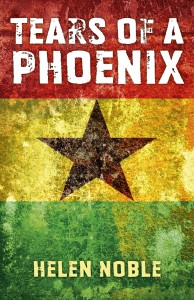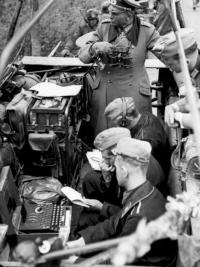
Excerpt from Tears of a Phoenix, by Helen Noble, published by Soul Rocks in 2012
 Danny’s cell was somewhere I could go, where it was easier for me to forget
where I really was, and a whole new world was starting to open up for me.
Danny’s cell was somewhere I could go, where it was easier for me to forget
where I really was, and a whole new world was starting to open up for me.
He asked me if I ever played the drums. I thought of the one that belonged to our father, the one that he kept at the back of his wardrobe, away from us kids. I remembered the time that my
brothers got into a fight over who could play with the drum, whilst our father was out at the pub, and accidentally broke the skin stretched over its carved, wooden base. As feared, our
father had erupted when he found it and Jon, as the eldest took the beating. I could only watch as he cowered, trying to cover his bruised and bleeding face from the blows of our father’s
furious fists.
Trying to clear that image out of my mind I focused on the drum and described it to Danny.
‘Ah the talking drum.’ He knew what I was talking about. ‘Do you have it in here with you?’
‘No it was broken. I left it at the flat. I have some of my old man’s other things though.’ I don’t know why I volunteered that. Perhaps I thought Danny might know something about the golden stool and the tunic – the stuff that I had taken after he died.
He asked me to bring the items to him.
‘Kente cloth’ he stated as I unrolled the tunic I kept in my box of personal stuff in my cell.
‘You know about this?’
‘Yeah, traditional African cloth – your old man from West Africa?’ Danny asked.
‘Yes, came to London in the fifties by all accounts, married Ma and stayed. We’ve still got family members over there.’
Danny rolled up his prison-issue, sweatshirt sleeve to reveal a black tattoo on his right forearm, looked like the blades of a windmill with a hole in the middle. ‘Ananse,’ he announced,
‘the spider.’ I was none the wiser. ‘It’s a symbol from Ghanaian culture,’ he informed me. ‘I lived in Ghana for a couple of years, when I was just a kid. I can remember some stuff, mainly
from the traditional storytelling sessions. This Kente cloth was supposed to have been inspired by the weaving of this web by the spider. If you check out the loom they sometimes use to
make this stuff, you’ll see it’s different from other looms in that the man, the weaver, actually positions himself within the loom itself, like a spider in its web.’
‘A man, weaving?’ I asked, thinking Danny had made a mistake.
‘Yes, most traditional crafts, such as pottery and weaving were the work of men, not women in Ghanaian culture.’ Danny continued, ‘in Akan culture, Ananse is the messenger of the Supreme
Being, God, Yahweh, Allah, Jehovah, John Smith or whatever you want to call him. He is the keeper of all of the superior one’s stories, and the communicator between him and us. He weaves a
web of energy, which spans the whole of existence, from the outer
reaches of the universe to the individual cells of our bodies. And then like just as you see a spider venture out from one briar in a garden bush, weaving himself all along the hedgerow, he
can then travel to and from any point in the spirit-world to the physical world along the many skeins of this web, carrying messages between the supreme and the people’.
Inspired by Danny’s apparent knowledge of Ghana and its culture, I grabbed one of the pencils lying around and sketched an image from memory. ‘My old man had a tattoo on his right forearm,
sort of like this...’
Danny looked at it and said ‘Okodee Mnowere – the Eagle’s talons. This is the Adinkra symbol of strength, bravery, power. The eagle is the king of the sky and its strength is concentrated
in its talons. Your old man, was he part of the Oyoko clan? He must have been, to have this tattoo done, back in the day. Anyone can have one of these now, but if he had it when he was
young, then he must have been Oyoko, one of the ancient nine Akan clans,who used this symbol as their emblem.’ This was all news to me. Danny switched his attention to the tunic, ‘so this is
authentic Kente cloth then, not some imitation.’ He looked more closely at the cloth, running his fingers firstly along the black and white vertical stripes; and then across the interwoven
red, green and gold stripes arranged in alternating
blocks. ‘Kyerekwie’, he announced, ‘cloth of the lion catcher. See these black warps? These represent the black markings of the animal’s fur.’
‘What does that mean?’ I asked.
‘Mate, it means that your old man was descended from the clan of lion catchers. The colours and the patterns in the cloth tell the story. This is your heritage, too.’
Danny looked excited at his discovery. He became very animated, very keen to learn more about me.
http://www.helennoble.co.uk
http://www.soulrocks-books.com/books/tears-of-a-phoenix
Categories:
0 comments on this article







